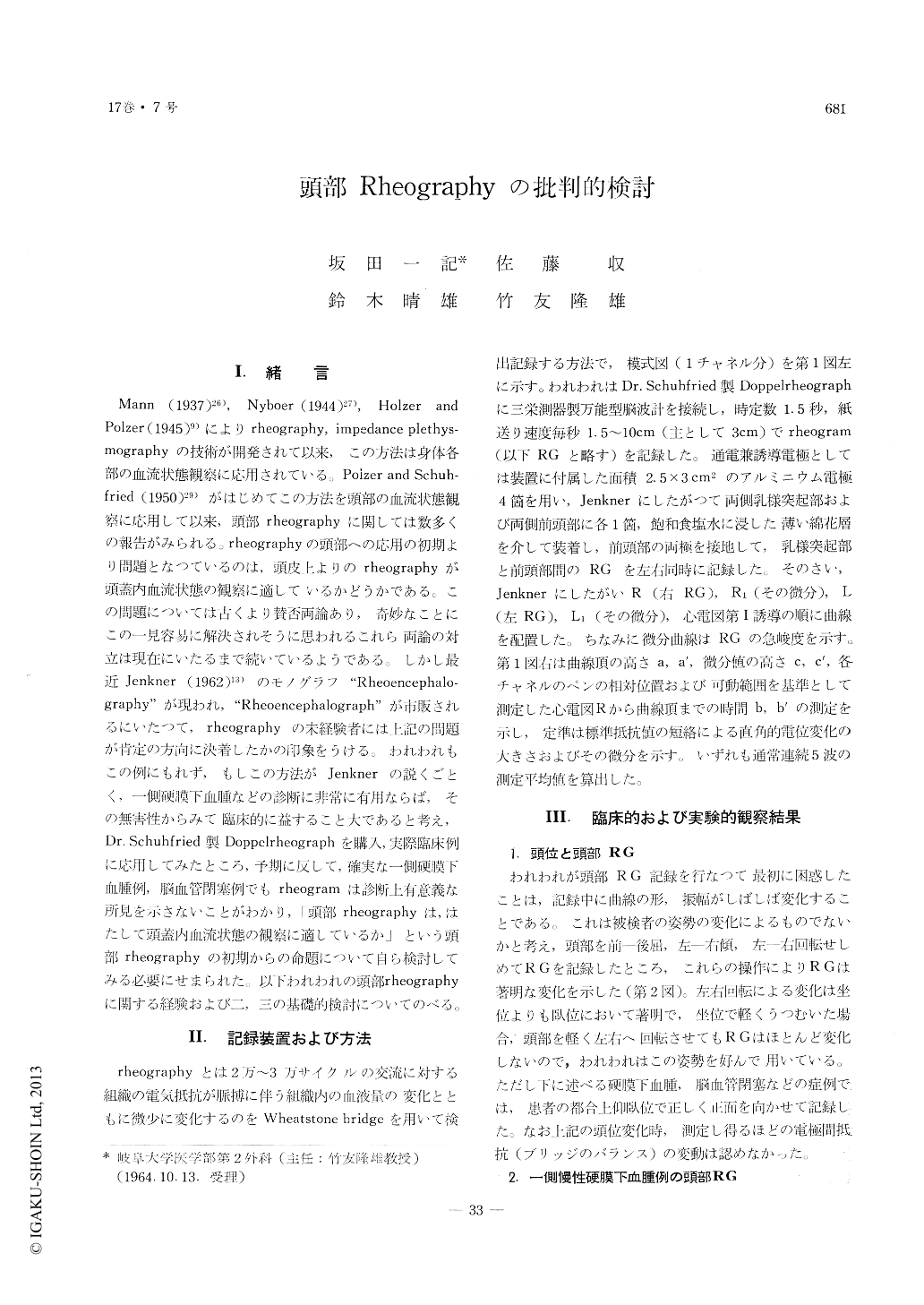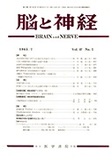Japanese
English
- 有料閲覧
- Abstract 文献概要
- 1ページ目 Look Inside
I.緒言
Mann (1937)26), Nyboer (1944)27), Holzer and Palzer (1945)9)によりrheography, impedance plethys—mographyの技術が開発されて以来,この方法は身体各部の血流状態観察に応用されている。 Poizer and Schuh—fried (1950)29)がはじめてこの方法を頭部の血流状態観察に応用して以来,頭部rheographyに関しては数多くの報告がみられる。rheographyの頭部への応用の初期より問題となつているのは,頭皮上よりのrheographyが頭蓋内血流状態の観察に適しているかどうかである。この問題については古くより賛否両論あり,奇妙なことにこの一見容易に解決されそうに思われるこれら両論の対立は現在にいたるまで続いているようである。しかし最近Jenkner (1962)13)のモノグラフ"Rheoencephalo—graphy"が現われ,"Rheoencephalograph"が市販されるにいたつて,rheographyの未経験者には上記の問題が肯定の方向に決着したかの印象をうける。われわれもこの例にもれず,もしこの方法がJenknerの説くごとく,一側硬膜下血腫などの診断に非常に有用ならば,その無害性からみて臨床的に益すること大であると考え,Dr. Schuhfried製Doppelrheographを購入,実際臨床例に応用してみたところ,予期に反して,確実な一側硬膜下血腫例,脳血管閉塞例でもrheogramは診断上有意義な所見を示さないことがわかり,「頭部rheographyは,はたして頭蓋内血流状態の観察に適しているか」という頭部rheographyの初期からの命題について自ら検討してみる必要にせまられた。以下われわれの頭部rheographyに関する経験および二,三の基礎的検討についてのべる。
Cranial rheography or rheoencephalograpy, is recently, being used clinically to observe the state of intracranial circulation. Using a "Doppelrhe-ograph", we performed cranial rheography in 5 cases of confirmed unilateral chronic subdural hematoma and in 2 cases of verified occlusion of large cerebral arteries. The results we obtained were inconclusive for the purpose of their diagnosis. In order to exam-ine whether cranial rheogram really expresses the state of intracranial circulation, we experimentally interrupted the internal and the external carotid cir-culation respectively in 4 clinical cases and the effect on cranial rheogram was observed. In 3 of them the effect of the external carotid interruption was much greater than that of the internal carotid inter-ruption. In the remaining 1 case interruption of the external as well as the internal carotid circulation caused no significant change in rheogram. For the purpose of examining the facility with which the measuring current enters the skull, electrical resistan-ces of the scalp and the skull were measured in craniotomy cases and it was found that the resistance of the skull was of much higher order than that of the scalp. The effect on scalp rheogram of short-circuiting either one of 2 pairs of electrodes which were implanted beneath the scalp and beneath the skull respectively, was also observed. Rheograrn was also recorded from the surface of the dura and the curve was found to have reversedphase, showing increase of electrical resistance synchronous with systole. The results described above, together with the fact that cranial rheogram is markedly influenced by changes in head position, indicate that cranial rheography is inappropriate for observing the state of intracranial circulation.

Copyright © 1965, Igaku-Shoin Ltd. All rights reserved.


